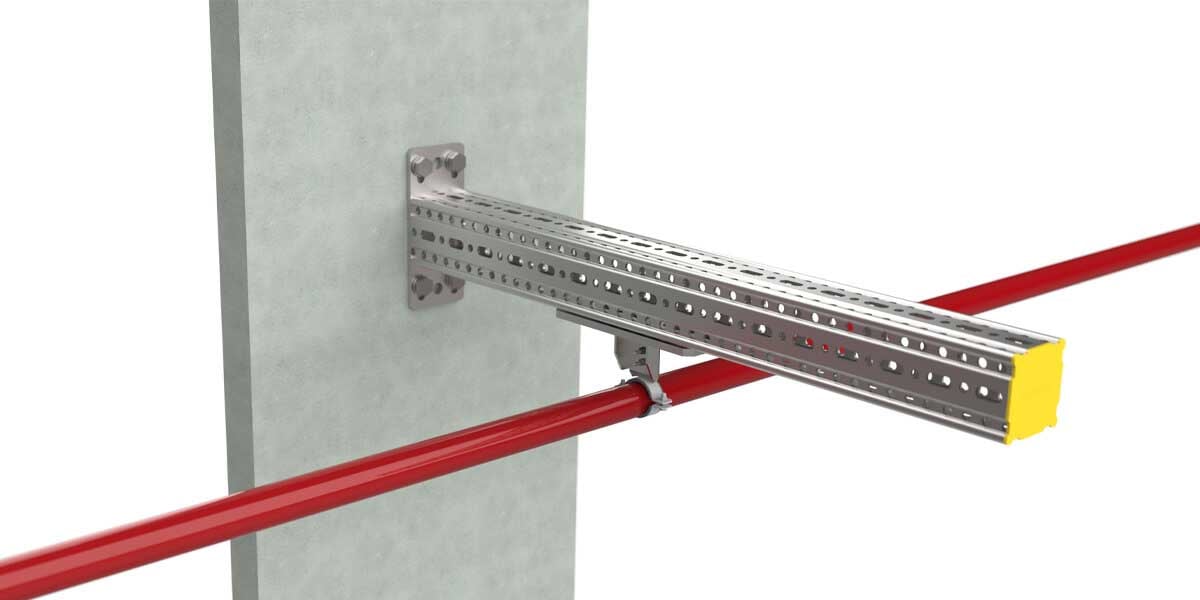As an M&E contractor, you know that the construction industry by its very nature is dangerous, and that’s why it’s highly regulated.
You are probably aware of the different standards and the need for implementing best practices. But you also know that your business needs money to operate! And you understandably don’t want to risk wasting money through implementing best practices and compliance. Whatever will you do?!
Fret not, dear reader. This article should help you realise how to find the right balance between the two, for your needs. This article will cover:
- What is the sector saying about best practices?
- What is the dilemma that M&E contractors face?
- Why does the misalignment cost money?
- What can M&E contractors do to address this?
- Conclusion
What is the sector saying about best practices?
What we’ve gathered from our interactions and conversations with others in the M&E sector indicates that most contractors have aspirations to use best practices and see the value in it, but feel that that notion is not shared by everyone in their organisation.
It’s clear that cost is definitely a much more dominant factor and is prioritised over adopting best practice, compromising compliance and safety.
There seems to be an understanding among everyone that the biggest obstacle is the collective mindset change. In an ideal world, who wouldn’t want to do the best job possible? Unfortunately, there’s more that goes into it.
In such a well-established industry that has long-standing practices adopted by many, people are bound to have a more traditionalist approach. To shift from the current ways of a lack of evidence, relying on judgement rather than science and minimizing (initial) costs as much as possible, to ensuring evidence behind all installations and using best practice, is no easy feat.
At the end of the day, it’s within the interests of both principal and sub-contractors to avoid failure from a reputation point of view. Subcontractors that are compliant are considerably more attractive to the principal contractors because, self-evidently, failure is less likely – and who wants failure?
Despite the liability side of it being passed on out of the Tier 1s hands, the reputation aspect still applies to both and to the whole project, so compliance has incentives for everyone involved.
Finger-pointing between Tier 1s and subcontractors is quite usual, with each blaming the other for non-compliance. Tier 1s say that they demand compliance but it’s the M&E contractors that don’t adhere to it, while the subcontractors blame the Tier 1s for demanding it but not sacrificing their budget; as highlighted in the comment below from a Tier 1 contractor.
“My feelings are that the industry has had a purge of small contractors who had a poor quality ethos that have grown big. From man in a van to delivering million-pound contracts. Profit means more to them than delivering something that meets spec and requirements. Only way they will improve is by being told to take it out because it’s wrong and it’s at their cost. Independent validation will do this.”
- Tier 1 contractor
This brings us to a paradoxical situation. It’s unanimous that Tier 1s do want to see more compliance, and any opportunity to introduce best practice to them is a way to be able to demonstrate this to their clients. Plus, provided that they’ve specified something needs to be done a certain way in line with the standard, then if the M&E contractor doesn’t comply, the latter will be held accountable because the Tier 1 has already done their part.
However, while Tier 1 contractors want compliance, they often aren’t prepared to pay the additional price for it, so it’s really a question of how much of a priority is it.
What is the dilemma that M&E contractors face?
The truth is, neither compliance nor cost will ever be the only factor throughout the industry – cost will always be a driving force for any business. After all, money makes the world go round, and profit is needed to keep the business going! And even though you’ll likely be saving costs in the long run, it’s understandable to be reluctant when the initial costs seem more significant.
This is particularly true at present times where projects may have been priced 12-24 months ago based on market costs at that time. Raw material prices have changed, yet they’re also trying to embed best practice, so the margins are squeezed and often they’re forced to source based on cost.
The goal is to find the right balance for you between these two factors. If you engage early, even before the bid phase, and Tier 1 contractors are clear on specifying compliance and what levels of compliance they are expecting, then subcontractors will know what to price for in their bids.
But that’s not to say compliance is always expensive, either – don’t get us wrong. That’s a common misconception that might deter contractors away from being compliant. In some cases, it could be, but in others, as mentioned you could well be saving money if done right.

Why does the misalignment cost money?
To reiterate, not embracing best practice comes with unseen costs that could be resulting in you missing out on business.
On top of that, if the organization doesn’t collectively have the same vision or isn’t going in the same direction, it impacts efficiency. For example, if the ‘Mechanical’ arm wants to follow the ‘best practice and early engagement’ framework, whilst the ‘Electrical’ part wants to focus on sourcing based on price and reducing costs, then there’s no cohesion, and that costs money.
Something else you might not have thought of is that when you don’t embrace best practice, you could be ‘over-engineering’ i.e. deliberately choosing oversized and ‘over-specced’ components, to make up for it and ‘ensure’ the support won’t fail. But this technique isn’t efficient either, because you could be wasting more and/or heavier-duty materials unnecessarily. Plus, it doesn’t prevent the risk of costly rework later on due to malpractice.

What can M&E contractors do to address this?
If you truly want to get the right balance between prioritising cost vs best practice, there are a few things you can do.
The first and all-encompassing step is to engage with relevant stakeholders as early as possible in the project life cycle. This will make the rest of the process much easier.
It won’t cost you anything, but it will mean you’re much less likely to specify the incorrect products, and also to experience miscommunication between key stakeholders. Not only that but any issues or setbacks can be resolved swiftly since you will have already established the points of contact.
When you have all the correct product data, specifications can be drawn up right at the beginning, ensuring compliant design. And by following bracketry and fixing policies from the get-go, you’ll automatically be more likely to use best practice, mitigating the risks of anything going wrong that might require costly rework.
Something else you can implement is provable tested channel systems. These are backed up by comprehensive data that substantiates that all of the components can perform together, the system is fit-for-purpose, and will safely take the loads applied to it.
In doing so, you are automatically being compliant – congrats! You’re ensuring you have data to back up your installations, and at the same time, not ‘overengineering’ or wasting any materials, since you’d be using an optimised solution, just enough for what you need. The only other thing you’d need to be conscious of is installing the system correctly, which brings us to the next point…
That is to continually upskill your workforce in line with the most recent best practice through training. If your installers are competent and aware of the standards of compliance, that sets the scene for a safe installation and a compliant project from start to finish.
Adopting the above practices and mindset will increase your chances of getting everything ‘Right First Time’, and who doesn’t want that?
Once you reach that success, you’ll want to keep achieving it and to do so, you should keep abreast of everything that is changing. You’ve probably noticed that our industry’s “rules and regulations” are ever-changing, and new standards, bills, acts, and codes of practices are constantly being introduced, so to stay compliant, you should also keep diligent and up to date with these.

Conclusion
At the end of the day, most of it comes down to the Tier 1 contractors. If they are not only being proactive about promoting and executing best practice, but also expecting it from their subcontractors, then it will automatically become the standard. The subcontractors have to follow because they work for the Tier 1s, and it will become a competitive advantage for both.
Tier 1s need to be the ones to request best practice to drive and motivate M&E contractors to follow be compliant and adopt it for all their projects. Then it’s a win-win-win situation! As we said, it’s in everyone’s best interest.
We hope this article has helped you understand the importance of safe and compliant techniques in the workplace, especially in a treacherous industry like construction.
Do you already follow codes of practice and standards, and if not, will you now? 👀 Have a think.



